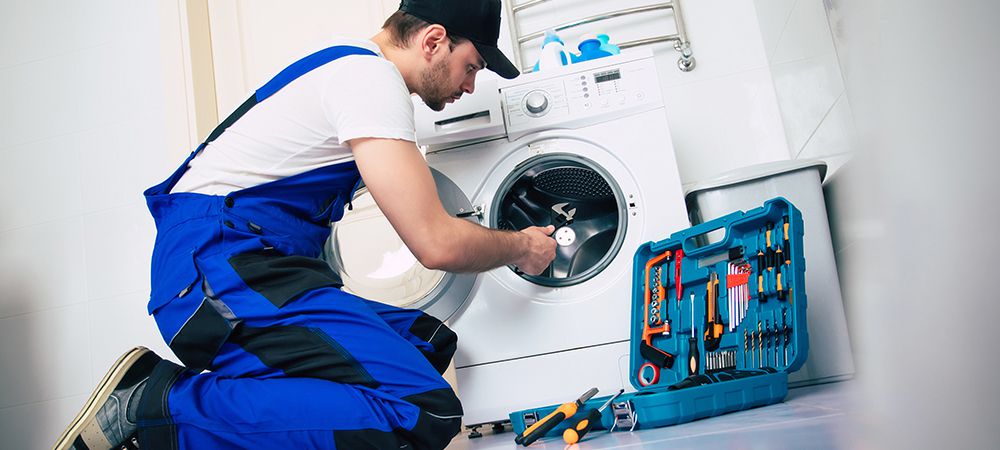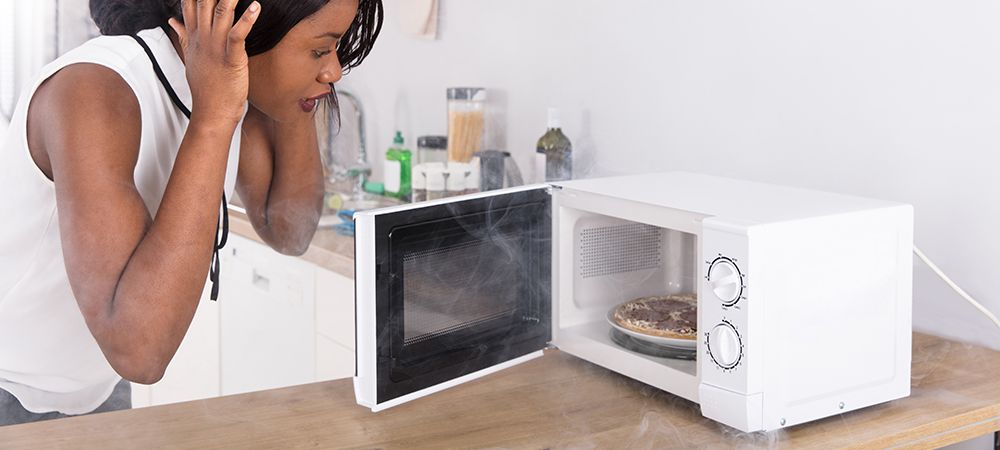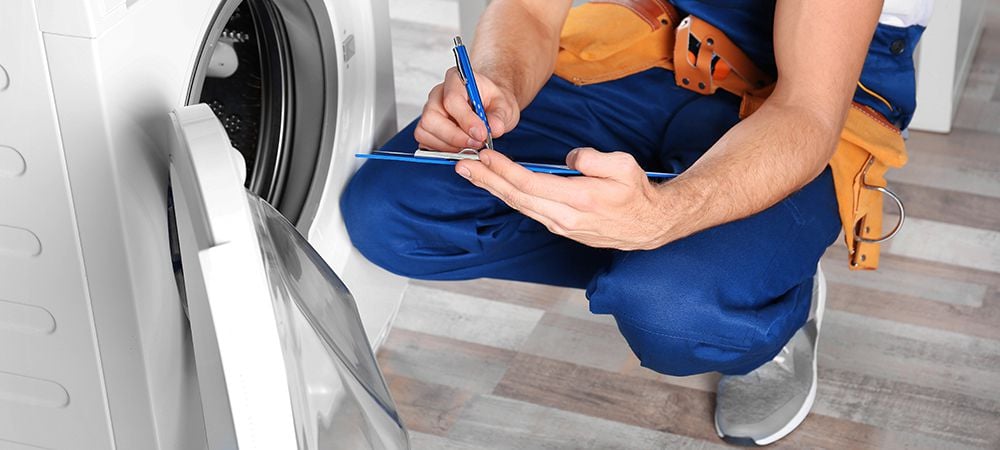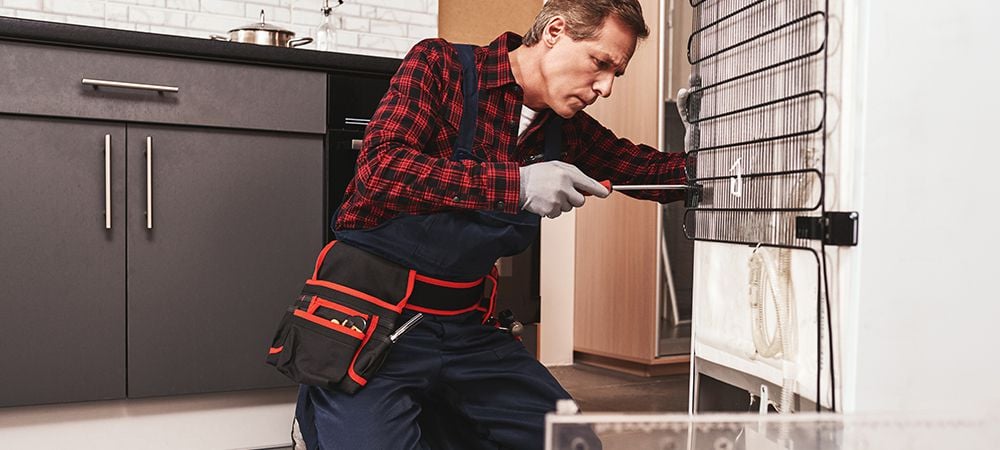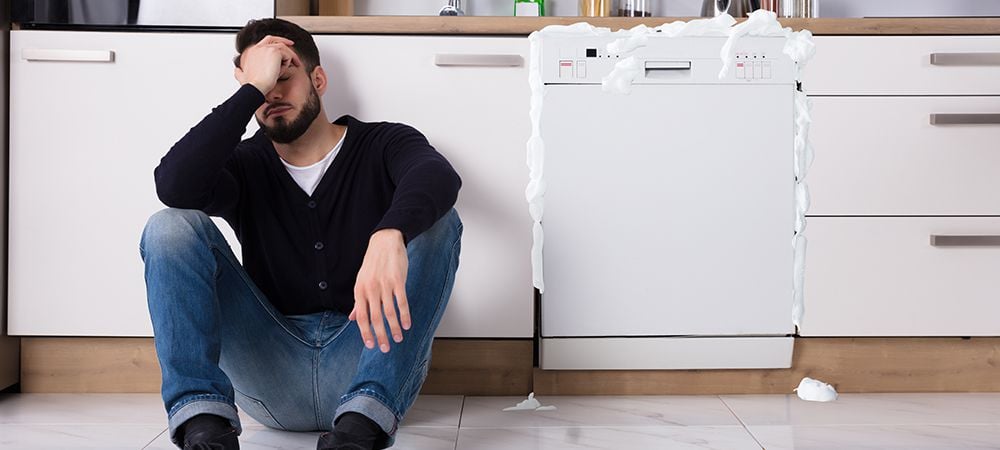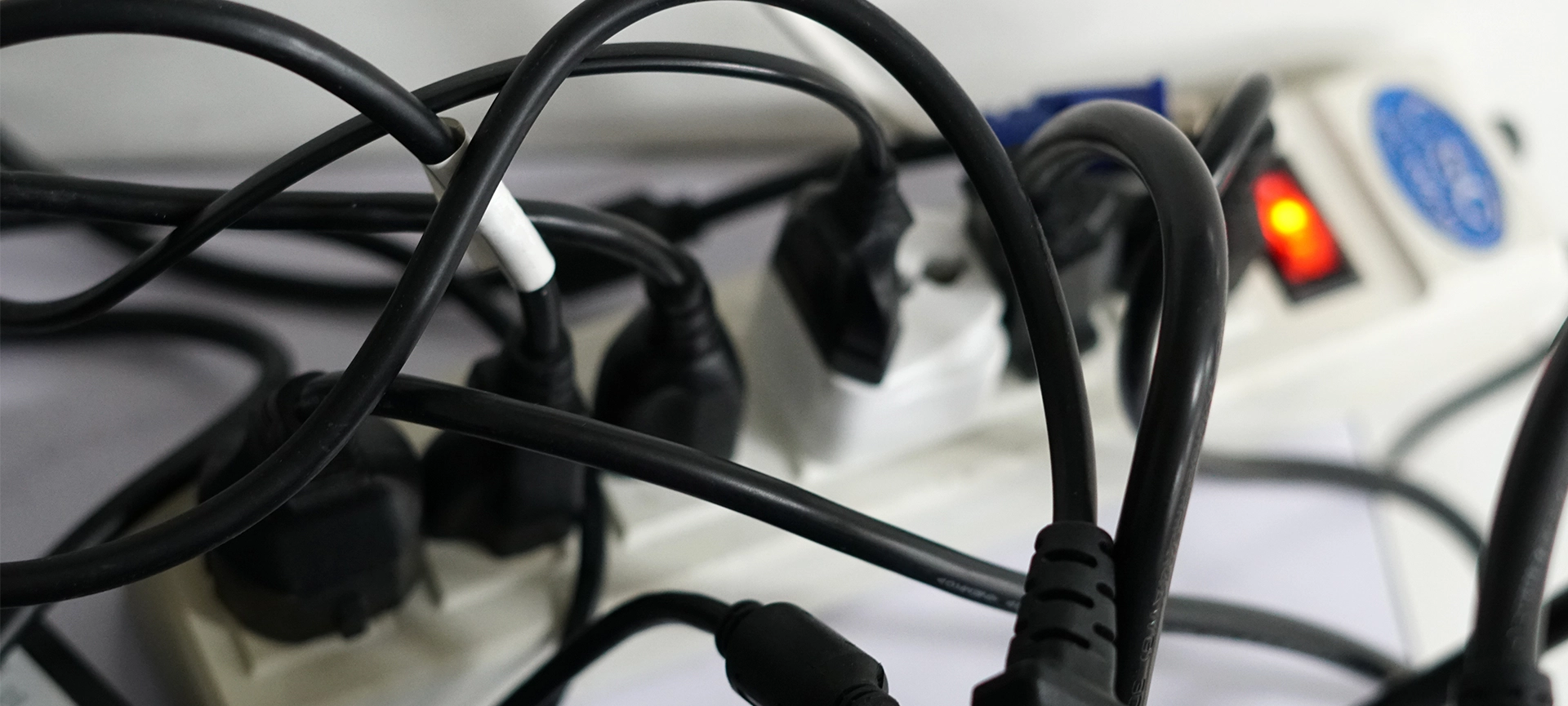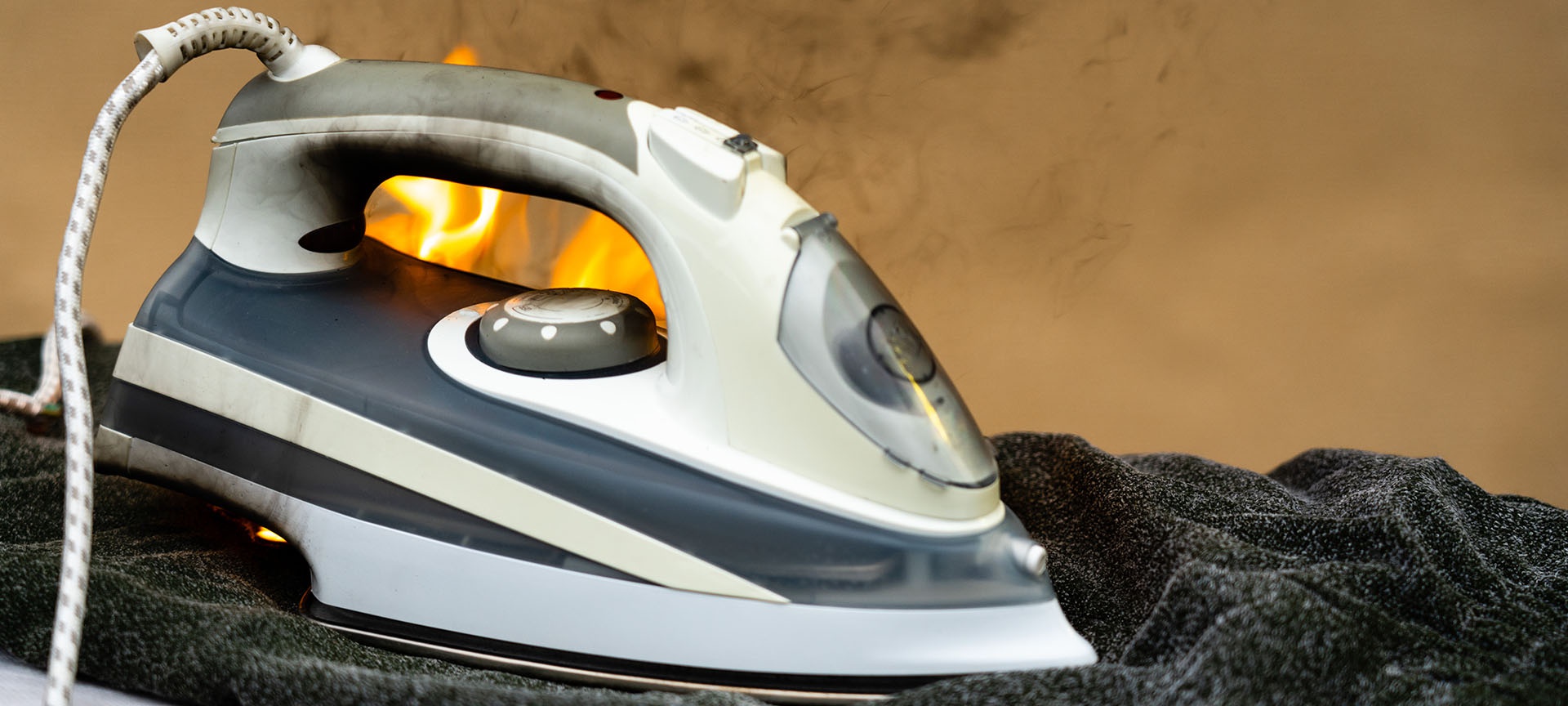Appliances make life easier but can disrupt your routine when they become faulty. Even the common appliance repair problems can be pretty annoying.
For instance, finding out your refrigerator isn’t cooling after a day under the scalding sun can be frustrating. Or perhaps, it’s laundry day, and the washing machine is suddenly not working.
Learning how to troubleshoot common appliance problems can save you stress and money. And this article discusses common appliance repair problems, serving as a guide when the need arises.
They say “prevention is better than cure.” But what if the deed has been done? How do you remedy the situation and salvage your appliance? Here are ten common appliance repair problems, their causes and ways to fix them.
Microwave Oven Problems
Like other electrical appliances, a blown fuse can cause a microwave not to come on. However, if at all it does come on, it may not be heating up. Here are two common microwave problems you may be encountering.
Blown microwave fuse
If the main fuse of your microwave blows, your microwave won’t work unless you fix it. The high flow of electrical current through the microwave’s main fuse can cause it to blow. Additionally, if your microwave is overheating, the chances are high that its main fuse will blow. It’s impossible to reuse blown fuses — the best option is to replace them.
Causes
- Misaligned door
- Overheating caused by a malfunctioning fan
- Broken door interlock switches
- Short in the magnetron, power cord or controller
- High voltage diode short
How to fix
- Unplug the microwave from the power outlet
- Before servicing the microwave capacitor, discharge it {place screwdriver blades on each capacitor terminal}
- Detach the thermoprotector or the blown fuse from your microwave
- Take the reading of the capacitor. Ensure your multimeter is on the lowest
- If the multimeter doesn’t display any charge, you have a blown fuse
- Replace the blown fuse with a new one
While replacing a blown fuse, follow the same process above but in reverse. Always refer to the user manual if you’re unsure of how to install the fuse. Also, a microwave capacitor can have a dangerous charge although unplugged. Therefore, take safety precautions by discharging the capacitor first before testing it.
Microwave plate not moving
If the microwave oven plate isn’t rotating, the chances are you won’t get evenly cooked food. To properly distribute the heat and cook your food, the microwave plate needs to rotate.
One major cause of the turnplate not working is the motor. You can find the motor just below the oven floor, and can only access it through the bottom.
Causes
- Faulty roller guide underneath the tray
- Faulty drive coupler
- Faulty drive motor
How to fix
For faulty motor,
- Disconnect your microwave from the electric source
- Locate the motor and disconnect its wires
- Use a multimeter to check for continuity at the motor’s terminals
- Replace faulty motor if there’s no continuity
For faulty coupler,
- Unplug your microwave from the socket
- Remove the roller guide and the tray
- Check to see if the coupler is worn out or cracked
- Detach the worn-out coupler from the motor and replace it with a new one
For faulty roller guide
- Inspect the roller guide by removing the tray
- Check the outer rollers for damage or cracks
- Inspect the hub whether it keeps the coupler secured
- If the roller guide is damaged, replace it with a new one
Dryer Problems
If you struggle to get your dryer to heat up and dry your clothes, you may be dealing with a faulty thermal fuse. A bad terminal block can cause your dryer not to work at all.
For owners of dryers, one common repair problem with their appliance is the dryer not spinning while drying.
Here are common dryer problems and how to troubleshoot them.
Clothes are warm but not dry
If your clothes in the dryer feels warm but not dry after a heating cycle, you probably overloaded it. If this is the case, remove some clothes and run it for another cycle. However, if your dryer is still acting up with only a few clothes, you have a faulty heating part.
Another probable cause of wet clothes after a cycle is a clogged vent. Finally, one common cause of appliance damage is inadequate attention.
Causes
- Clogged dryer vent pipe
- Faulty heating part
How to fix
For faulty heating parts,
- Unplug your dryer from the power outlet
- Detach the back panel and remove the faulty heating part
- Disconnect the wires and install a new heating part
- Reconnect to power and test run it
For clogged ducts,
- Disconnect your dryer from the power
- Remove the dryer vent pipe from the wall
- Clean the lint cover and the pipe {you can use a vacuum cleaner or an auger snake to unclog the pipe}
- Wash your vent cover with warm soapy water
- Reattach the vent pipe and lint cover
- Test run your dryer
Dryer drum not spinning
The humming of your dryer motor is a signal your dryer is working. There is a problem if the motor is humming, but the drum isn’t spinning. Thankfully, this common appliance repair problem is a quick fix.
Causes
- Worn out drum rollers
- Worn out roller axles
- Worn out drum bearings
- Worn out drum glides
- Damaged drive belts
How to fix
- Unplug the dryer from the power outlet
- Remove the rear panel of your dryer
- Inspect the belts, rollers axles, drum glides, bearings and rollers
- If if any part is worn out, purchase a new one at your local hardware store
- If the glide is worn out, pop them out of their holes and replace the glide strip with fresh padding
- If the drive belt is worn out, undo the belt from the hooks and drum
- Replace with a new belt
Refrigerator Problems
One common refrigerator problem is water leakage caused by the accumulation of food particles in the drain hose. Asides from food particles, ice cubes sometimes get trapped in the drain hose. Common refrigerator problems are,
Water Leakage
Leaking water is a common appliance repair problem. Unfortunately, most appliances that use water for proper functioning are prone to this problem. Water leakage can be dangerous especially when in contact with electricity.
Cause
- Clogged defrost drain
- A leak in the waterline
- Brown drain pan
- High humidity
How to fix
- Disconnect from electric sources.
- Ensure to remove all food and drinks from the refrigerator to avoid contamination.
- Get a plumbing snake and dip into the hose as deep as you can. Then, move it in and out until the hose is free.
- Get a baking soda (about 1/2 teaspoons) and fill the drain with it
- Pour 2 to 3 cups of hot water into it.
Working freezer, faulty fridge
A faulty fridge can cause food spoilage, especially if you don’t detect it early. While a bad thermistor is likely the culprit, a damaged fan motor could be the cause. Below are two possible causes of a working freezer but a faulty fridge
Causes
- Bad Thermistor
- Evaporator fan motor
How to fix
- Firstly, check for the resistance of the thermistor using the multimeter.
- If the thermistor doesn’t have continuity, you need to replace it with a new one.
- Inspect the motor. Unusual noises in your fridge can signal faulty motor
- Replace the motor with a new one
Electric Cooker Problems
Electric cookers speed up your cooking process and are useful for everyday life. Therefore, you want to fix them as soon as they stop working. Below are common electric cooker problems and how to fix them:
Electric cooker does not heat
The electric cooker may sometimes fail to heat if one of the burners has become defective. For example, poor connection or a damaged heating coil is likely to cause your electric cooker not to heat.
Cause
- Defective heating coil
- Bad burners
- Poor connection
How to fix
- Switch your electric cooker off and then if it doesn’t work, try swapping your coil for a working one
- If the burner is bad, replace the burner with a new one.
If you detect that all the burners are affected at once, it’s most likely a connection problem. A poor connection can be due to a burnt outlet or faulty internal wiring. Check your electric cooker power outlet to ensure the fuse has not slipped. Faulty internal wiring will require a professional touch.
Electric cooker is getting too hot
When you notice your oven knobs are becoming too hot to the touch, it’s a sign. A faulty bake element or a blown oven fan can cause too much heat in your oven.
Cause
- Defective oven fan
- Damaged bake element
- Broken temperature sensor
How to fix
- If the fan is blown, access the fan from inside the cooker
- If the fan isn’t turning, remove and replace it with a new one
- Inspect the temperature sensor and baking element using a multimeter
- If there’s no continuity on the multimeter, the electric cooker parts are damaged
- Remove damaged parts and replace them with a new one
Related Article: 7 Most Common Electric Cooktop Problems
Dishwasher Problems
Here are possible problems you may notice with your dishwasher and ways to fix them.
Dishwasher will not start
A blown fuse is a common cause of appliance damage, especially when in use. Another reason your dishwasher isn’t starting is a stuck motor. The first step in troubleshooting a faulty dishwasher is to check the connection. If it’s connected to a power source, there may be an internal problem.
Cause
- A blown circuit breaker or outlet
- Defective door lock
- Faulty motor
- Faulty control panel
- Faulty internal components
How to fix
For a blown circuit breaker,
- Disconnect power from the main power source to prevent electric shock
- Check for the fuse in the control panel.
- Check for the control panel
- Remove the bad fuse
- Replace it with a new one
For a defective door lock,
- Locate the switch in the door panel. When you open the panel, you will see the switch
- With the use of a multimeter, check for continuity
- If there is none, replace it with a new one
For a stuck motor,
- Spin the fan motor using your hand to see if it rotates
Bad Smell
Many homeowners are guilty of not clearing out food remnants from the dishes before washing. A bad smell may be due to old or wet food particles lurking in the corners of your dishwasher. Melted plastic can also cause a bad smell coming from your dishwasher.
Cause
- Food scraps stick in filters or crevices
- Oil and grease build-up leading to bacteria growth
- Lack of maintenance
How to fix
- Check inside your appliance for any food debris
- Using a brush or toothpick, remove food particles from the passageway
- Drain stagnant water in your dishwasher
- Clean the insides of your dishwasher thoroughly using a rag and soapy water
- Wipe everywhere clean, including the dishwasher screen.
- Run your dishwasher using hot water
To avoid smelly dishwashers,
- Remove all leftover food from your dishes before washing
- Avoid overloading your dishwasher
Related Article: What to Do If Your Dishwasher Doesn’t Dispense Soap
To Sum It Up
You can avoid appliance repair issues with proper maintenance and adequate attention. Although appliances you use regularly are prone to damage, routine cleaning can prolong their life span. But, here’s no cause for alarm if your appliance develops a problem. Common appliance repair problems don’t necessarily need the services of a technician.
With this article, fixing common appliance repair problems should be a walk in the park for you. We have provided a simple guide to fix a damaged appliance.
But if you’re still unsure about your handyman skills, contact Prime Appliance Repair today! We offer effective same-day appliance repair services across the GTA.





